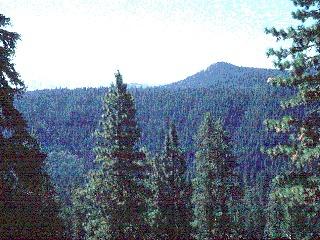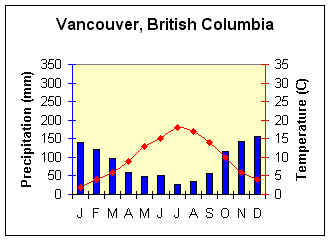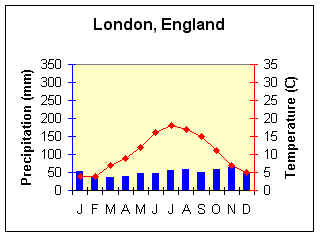Marine West Coast Climate (Cfb)
Latitude/Longitude = 49.1o N; 123.06o W |
Latitude/Longitude =51.3oN; .07o W |

Coniferous forest of western Oregon. (Photo credit: T. Detwyler Optilearn Inc. Photo from the World Biomes CD-ROM Used with permission) |
There is a significant difference in the climate situation between Vancouver and London, both Marine West Coast climates, arises from location, local topography, and ocean current influence. The dry summer in Vancouver is due in part to subsiding, subtropical high pressure lying to the south. Precipitation is nearly double that of London due to local orographic uplift of air. Milder winter temperatures in London arise from the moderating influence of the North Atlantic Drift. |
Geographic Distribution
|
Characteristics
|


